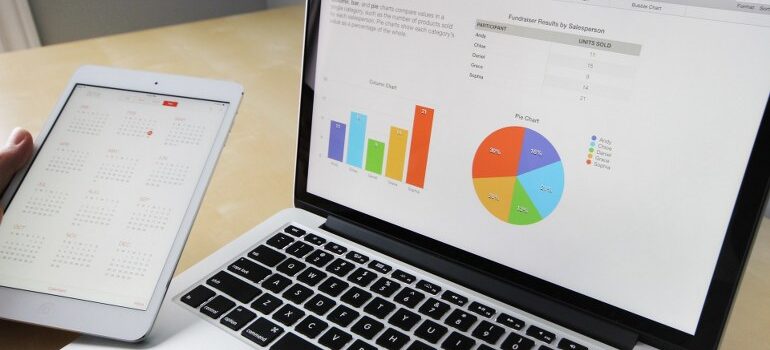Guide for using CRM to segment audiences
Book Free Demo
We’ve often mentioned how using CRM to segment audiences is a must in modern marketing. How you cannot hope to gain any notable rapport with your audience with generic, run-of-the-mill marketing content. Well, in this article, we will delve a bit more into why audience segmentation is important. Also, we’ll go over the necessary steps to incorporate them into your everyday business practice.
Audience segmentation

As the name suggests, audience segmentation means segmenting your audience into different groups. By doing so, you get a better idea of who constitutes your audience. Furthermore, it gives you a far better chance of engaging your audience in a meaningful way. But, alas, properly segmenting your audience will require you to develop an in-depth knowledge of your customer base. It will also require you to invest in CRM software for movers, which doesn’t always come cheap. So, at the end of the day, is it really worth it?
Why is segmenting your audience a good idea
As we said, segmenting your audience is a must for modern marketing. Long gone are the days when you could simply post generic marketing content and hope for the best. Today, you need to know who you are addressing, how to address them, and the best time to do so. Only then can you expect that your audience will actually pay attention to your marketing content and see what your brand is all about. As you can imagine, this has tremendous marketing benefits. And, it also enables you to focus your efforts so that you can better serve your customer needs.
Marketing benefits
All things considered, moving companies stand to gain a lot from investing in audience segmentation. By outlining different groups in your audience, you can see who constitutes your customer base. This enables you to see which moving services are most required, and when is the best time to offer them. By being able to reliably predict the needs of your customers you’ll make marketing far more efficient. Especially if you also use CRM email tracking for movers. A well-timed offer can be all you need to boost re-engagement rates and yield further profit.
Using CRM to segment audiences
Most CRM systems are fairly robust. If you get one with enough tools, you’ll be able to automate audience segmentation and ensure that each new customer is put into the right bracket. But, before you achieve this level of automation, there are a couple of steps you’ll need to take.
Gathering customer data

The first thing to do is to gather customer data. This entails both declared data and customer behavior stats. Once you get a knack for it, you’ll be able to automatically gather all the necessary data. But, at first, you may need to rely on forms and polls to find out what your audience is truly like.
Outlining important factors for segmentation
When companies decide to segment their audience they usually resort to standard demographic factors. And while age, gender, job status, and marital status can give you information about your audience, there are other factors that can have more important marketing implications. For instance, you can gather information about:
- Customer journey (is someone a repeat customer, or a first-time visitor).
- Specific customer actions (has the customer subscribed to your newsletter).
- Interactions (did the customer have any interactions with your brand).
- Purchases (if you are selling moving supplies).
- Preferences (when does the customer prefer to be contacted).
All of these factors give you input into how and when to engage your customer with marketing content. This is especially useful for finding new leads, as you essentially get the idea of what your ideal customer is like. Whether or not you get dedicated lead tracking software for moving company, you will have to rely on audience segmentation for proper functionality. Once you’ve gathered enough data, you can proceed to automate the process.
Automating segmentation
Once you set up your parameters within the CRM system, you’ll be able to automatically sort new audience members. This not only helps with segmenting your current audience but also ensures that each new member is put into the right category. It is paramount that your system regularly updates itself, as the status of an audience member can change. And once it does, you ought to address the change in order to have the necessary marketing effect.
Tracking the results
It is important to recognize right off the bat that audience segmentation entails trial and error. Even with prior experience and a decent idea of what your audience is like, you’ll still need to experiment a bit before you find the right way to segment. This is true of almost all moving companies, especially for those with limited marketing experience.

To make your experimentations worthwhile, you’ll need to track the effects of your ongoing segmentation. If the current effort produces notable change, great. If not, try to outline what is going wrong. Perhaps you have segmented your audience properly, but are not using the segmentation to full effect. Or, you may lack understanding of your customer base, in which case outlining the right marketing content can be difficult. Just keep in mind that experimentation is a part of the process and that you’ll get a hang of it sooner or later.
Final thoughts
It doesn’t take much research to learn that using CRM to segment audiences is hardly a novel idea. For years now companies have dedicated their time and resources to outline what their audience is truly like. The ultimate goal is to have fully personalized marketing, where every customer gets content tailormade for them. While this may sound like science fiction to some, modern AI advancements do show promise. So, while we cannot for sure say what the future of marketing is like, we can pretty much guarantee that it will entail high-end segmentation.
Stay Informed
Subscribe for industry
news & updates
"*" indicates required fields
